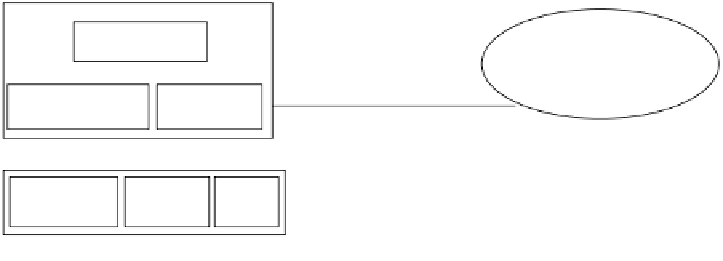Geoscience Reference
In-Depth Information
7.4
RELATIONSHIP BETWEEN MONITORING
AND MODELING
Monitoring results are necessary for correct and productive ecosystem modeling
(Figure 7.2). A well-designed model utilizing poor quality data will generate poor
results. Many modeling efforts have been weakened because they were based on
insufficient data sets. Existing results from many current national and international
monitoring programs are not sufficient for ecosystem modeling, and these programs
should be redesigned to accommodate the requirements of models.
For its part, modeling is helpful in designing monitoring programs and necessary
for evaluation of monitoring results. It optimizes the development and implementa-
tion of monitoring programs and thereby may improve their efficiency and cost/ben-
efit relationship.
Monitoring and modeling very often complement each other. For example,
feed-
back
monitoring
is actually a loop in which both a short-term forecast and adaptive
monitoring are incorporated. Such a complementary situation makes management
efforts much more efficient.
7.4.1
P
ERSPECTIVE
: M
ONITORING
TO
M
ODELING
Monitoring is undertaken according to a strictly prearranged spatio-temporal scheme
(see definition at the beginning of this chapter). The preliminary determination of
such a scheme to reach an optimization between the objectives and expenses is a
key point of monitoring system design.
Modeling in conjunction with expert evaluation is usually used for preliminary
monitoring design of an optimal scheme. For example, if the objective of monitoring
is to determine a long-term trend of the system, preliminary hydrodynamic modeling
could point out the areas in the basin where short-term variations of system param-
eters are minimal and therefore the errors of data collected are also minimal. Or
vice versa, if the spatial scheme is previously fixed, analysis of the variations of the
model solution at monitoring points can provide recommendations on the optimal
time interval for monitoring sampling.
Recommendations
Monitoring
Pre-simulation to verify
the different schemes
of data collection
Typical situation
for forcing factors
Monitoring of
internal parameters
Monitoring of
external forces
System
identification
Historical
data
Case
studies
Selection of
correct model
FIGURE 7.2
Perspective: monitoring to modeling.

























Search WWH ::

Custom Search